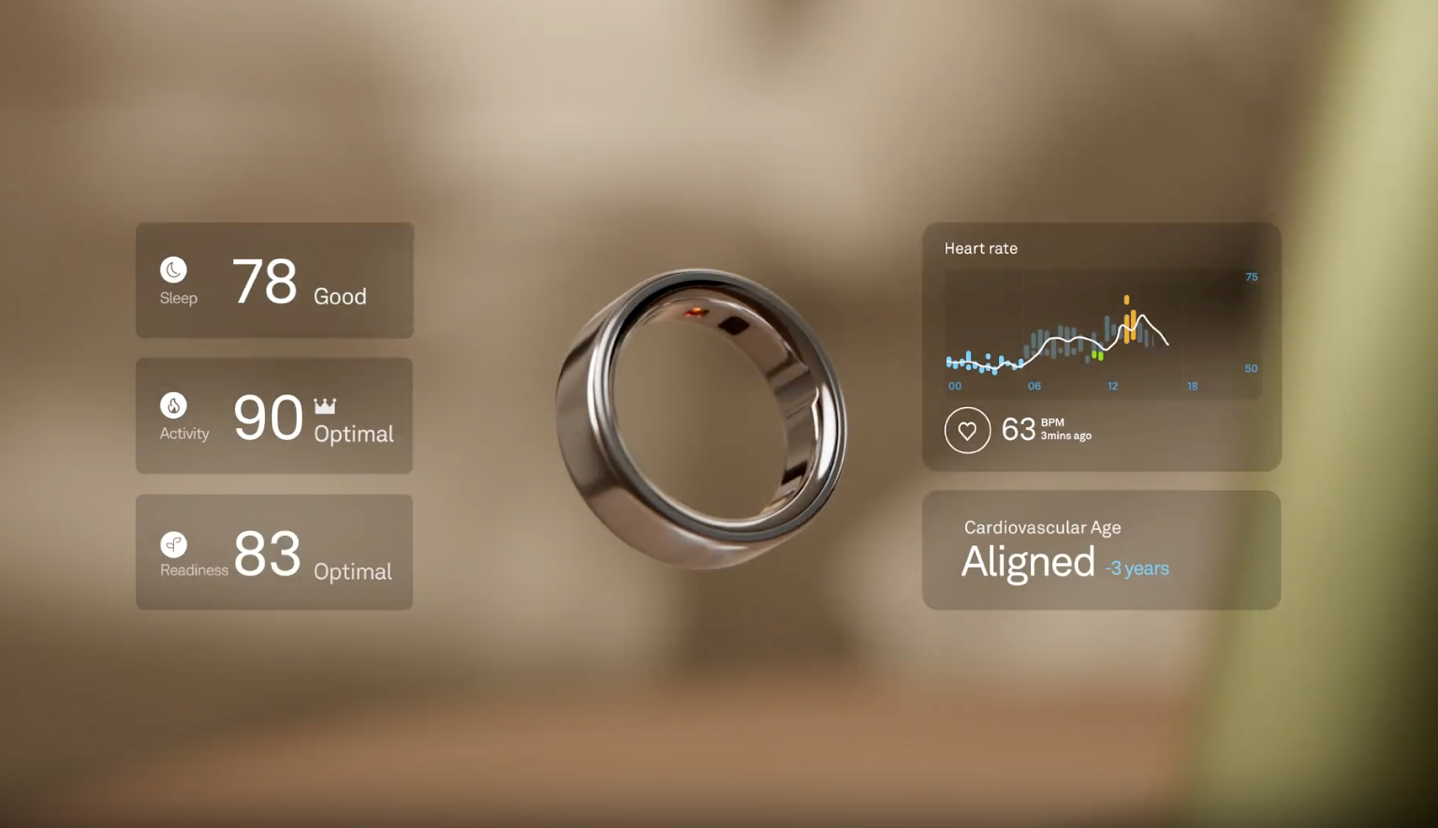
Oura has kinda quietly (in the middle of the night) announced their new Oura 4 ring, which the company says has substantially improved accuracy in certain areas compared to their previous Ring 3, as well as slightly improved battery life. Of course, with that, comes an increase in price, now starting at $349 versus the $299 it was previously (in Europe though, it starts at 399EUR vs 329EUR previously). The existing subscription pricing stays the same at $6/month or $70/year.
The new Oura Ring 4 is fully titanium, including the interior, which was previously epoxy. Also gone is the flat edge that was on previous models (now fully rounded on all models, whereas only the Horizon models previously were fully rounded). Further, the interior sensors no longer have small bumps on them, which were previously 1.3mm, and are now 0.3mm.
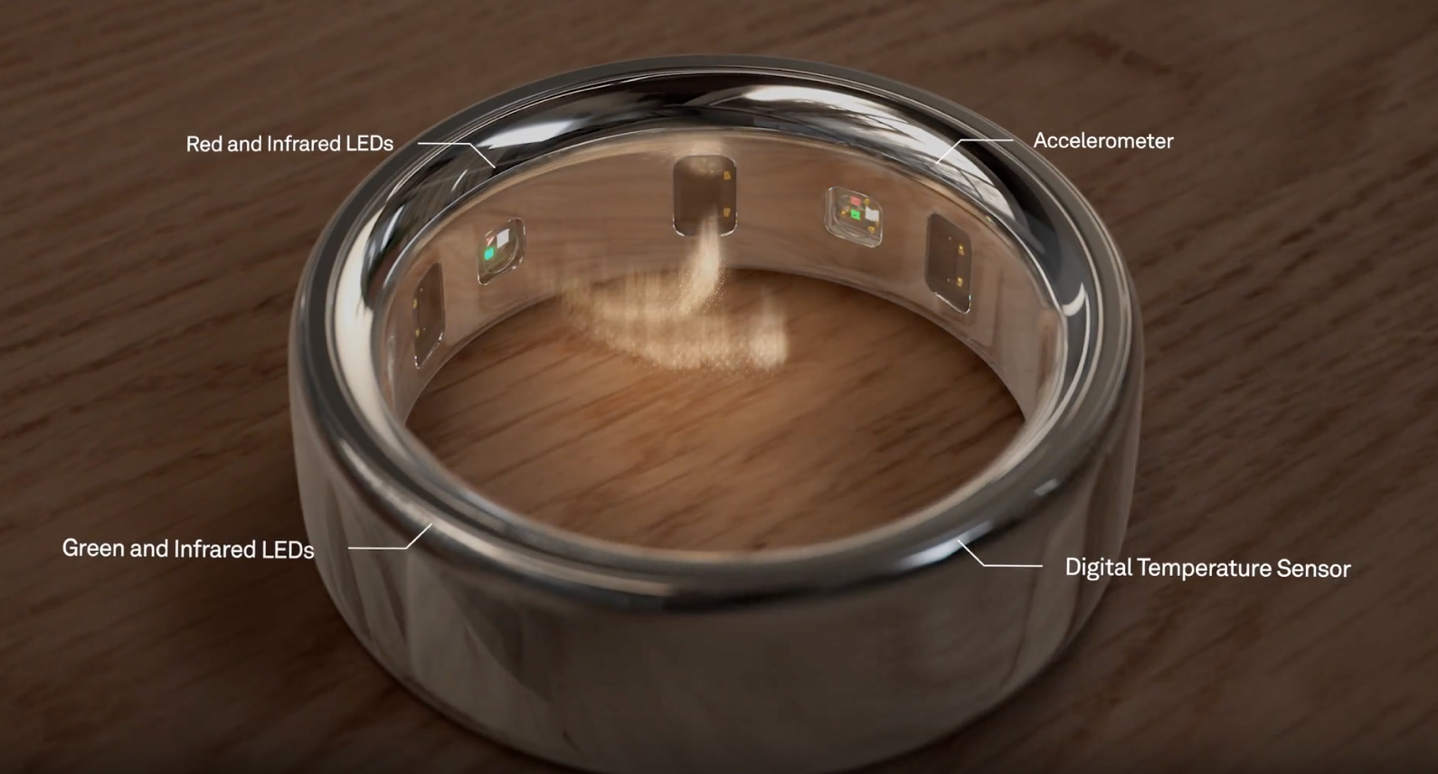
Interestingly, while Oura says the new ring is “slimmer”, their specs actually disagree a bit. The new V4 ring has a width of 7.90mm, and a thickness of 2.88mm. Whereas their own specs for the V3 ring specify a width of 7.90 and a thickness of “~2.7mm” for Heritage and “~2.9mm” for Horizon. The usage of “~” makes this iffy. And confusing matters worse, is that other Oura pages specify the V3 rings at 2.55mm thick.
Increased Accuracy:
Speaking of those sensors, the company says the new sensors combined with new algorithms have resulted in the following increases (these are the average across all participants, some were higher, some were lower):
– 120% improvement in signal quality* for blood oxygen sensing (SpO2), translating to a 30% increase in accuracy in average overnight SpO2 measurement [*Comparing the perfusion index signal quality metric between the selected OR4 SpO2 channels and to the Gen3 SpO2 channels. SpO2 accuracy is defined as the percentage of nights where the mean SpO2 value is within 2 points of the reference value]
– 15% more accurate breathing disturbance index (BDI) thanks to the higher signal fidelity [BDI accuracy is based on comparison against human-annotated SpO2 desaturation events]
– 7% fewer gaps in the daytime heart rate graph [Gaps are defined as 15 minute segments with missing heart rate data]
– 31% fewer gaps in the nighttime heart rate graph (5) [Gaps are defined as 5 minute segments with missing heart rate data]
This was based on 60 external participants, in an Oura-run study, but at an external sleep clinic. Meaning, Oura was paying for and analyzing all the output data, though, the participants were seemingly from outside the company. Either way, this isn’t an academic study, but really just a company leveraging external resources. Nothing wrong with that (at all), but, just want to be super clear since people often throw around peer-reviewed studies versus companies simply gathering data.
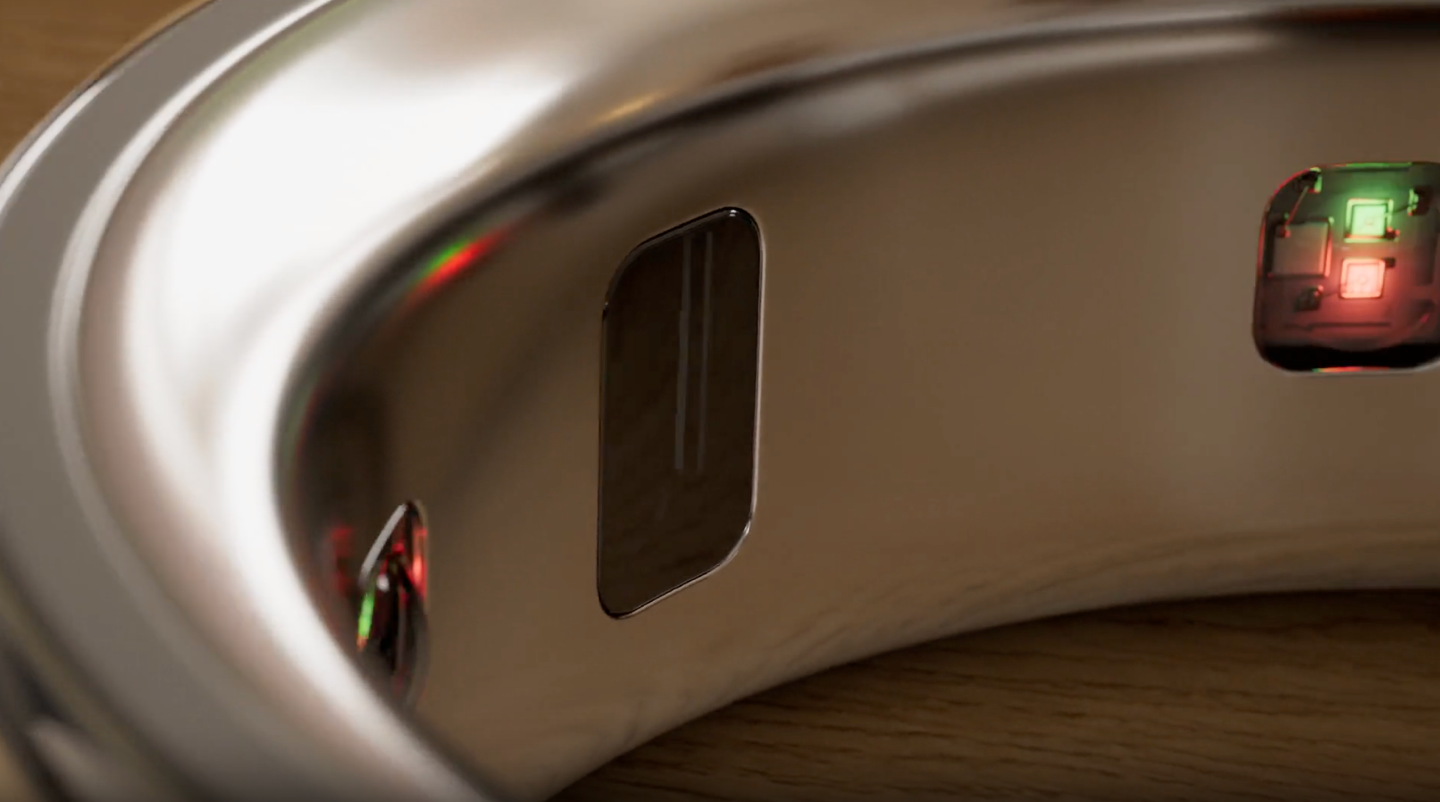
Beyond the accuracy increases, the company has also added a few more practical bits, both hardware and software:
– Expanded size range from 4-15 (versus previous 6-13), note that Oura says sizing is now different, so if you have a previous Oura ring, the sizes won’t necessarily match anymore (thus, get a new sizing kit first, which ships immediately, before the rings ship in a few weeks).
– Increased battery life, up to 8 claimed days (from the previous 7 day claim), noting that different size rings will get different battery life, due to battery size.
– New Automatic Activity Detection, which will “recognize everyday movements and heart rate zones, showing members their heart rate throughout their workout once detected”
– New Fertility insights, which will provide more information on chances of pregnancy during different stages of the menstrual cycle”
– New Daytime Stress, which will “overlay daily activity and tags with the Daytime Stress chart, helping members understand how daily movement impacts stress levels”
In addition, the app has been redesigned, which will simplify things around three core tabs: Today tab, Vitals tab, and Health Tab. While the app update has released, and theoretically is available for everyone, some 13 hours later after an update and a few app closes/opens, it’s still not showing in my app.
So instead, here’s a gallery of the new styles and pricing:

And the same for the European side:
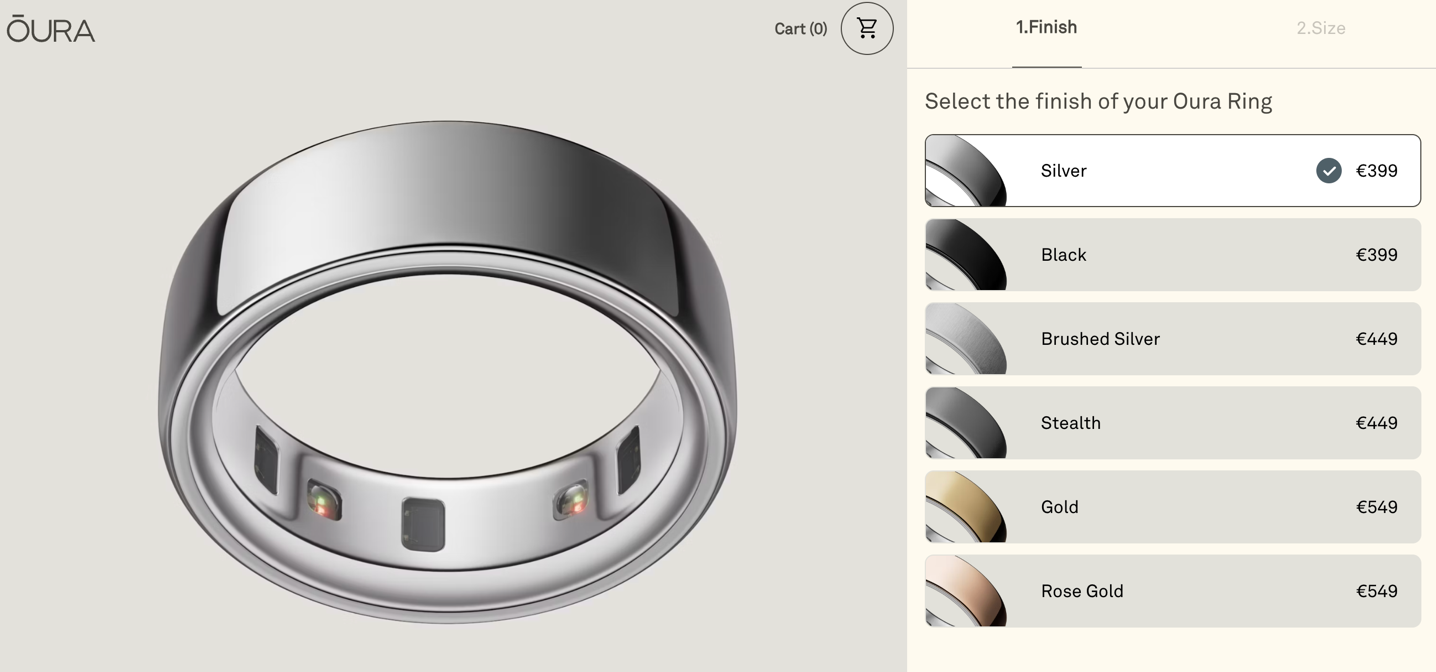
I think the most interesting thing here being the bump up in price to seemingly match Samsung at $399 in some models, yet, Samsung doesn’t have any subscription component. Of course, Samsung’s rings also have pretty questionable accuracy based on most reviews thus far (I had one one on backorder, but eventually gave up on waiting for it and cancelled the order).
Wrap-Up:
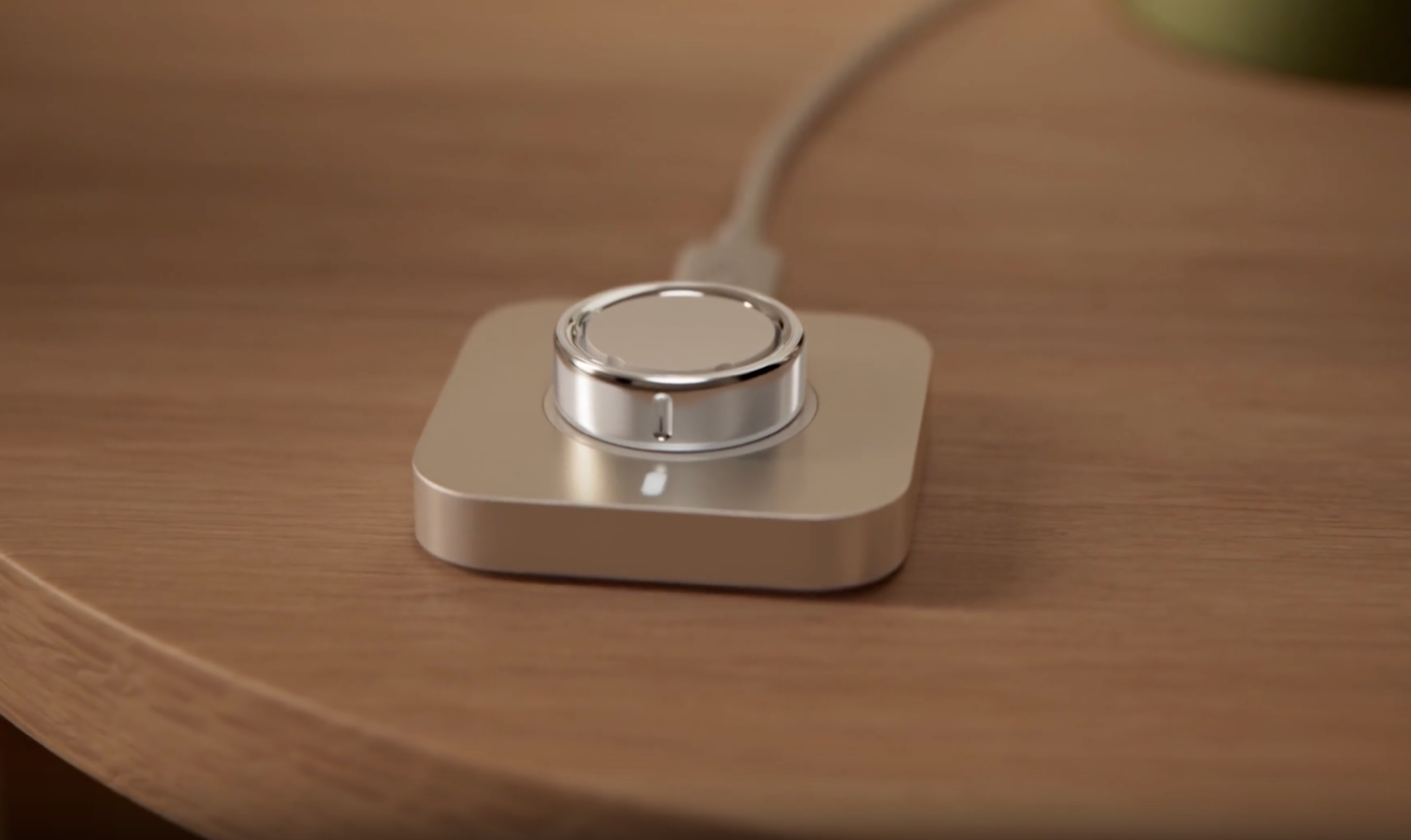
The new Oura Ring V4 is available for order today, with shipping starting October 15th. The company says they didn’t have many media samples available, and at the moment, I don’t see any noteworthy/trusted reviewers out there with reviews. In fact, I only can find a single media outlet that has a single unique/self-taken picture of the ring on their finger, with no commentary about usage. I’ve ordered one, and will report back when I feel like I have enough data for a review (I’ve been wearing the Oura V3 ring for a few years now, so I’m pretty familiar with their platform/systems).
That said, like most people that have commented on the new ring thus far, there’s a bit of disappointment Oura didn’t do more here in terms of the ring sizing or even charging design. The new Samsung charger (like a few other ring chargers) is brilliant, being a case somewhat akin to an AirPods case, wherein it charges the ring in a completely closed carrying pod (versus the Oura ring sits atop a stand). Further, other companies have significantly reduced the thickness of the ring, Oura didn’t make any meaningful gains here, and depending on which V3 ring you’re coming from, it actually got thicker internally (according to their own specs).
While the company tends to lean heavy on accuracy (and, they seem to do well there in my testing), at the same time, most other companies seem pretty reliable as well these days.
In any case, plenty more down the road – thanks for reading!


0 Commentaires